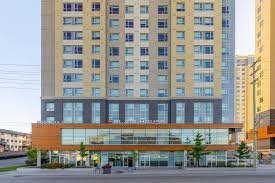Winter brings with it a unique set of challenges for homeowners, especially when it comes to roof replacement. Cold temperatures, snow, ice, and unpredictable weather patterns make roofing projects during the winter months more complex and demanding. However, for homeowners in need of urgent repairs or those working with experienced professionals like residential roofing Redding CA contractors, winter roof replacement is not only possible but can also come with certain advantages. Understanding the challenges and solutions associated with winter roofing can help homeowners make informed decisions and ensure their homes remain safe and secure throughout the season.
The Challenges of Winter Roof Replacement
1. Cold Temperatures Affect Materials
One of the most significant hurdles in winter roofing is the impact of cold temperatures on roofing materials. Asphalt shingles, for example, become brittle and are more prone to cracking when handled in freezing conditions. This brittleness can lead to improper sealing, which compromises the roof’s ability to shed water effectively. Adhesives and sealants also cure slower in colder temperatures, requiring additional time and care during installation.
2. Snow and Ice Accumulation
Snow and ice not only add weight to the roof structure but also create slippery and hazardous working conditions for roofing crews. Removing accumulated snow before starting the replacement is essential, but even then, sudden snowfalls can delay progress. Ice dams along the eaves can also obstruct proper water drainage, complicating the replacement process further.
3. Shorter Workdays
Winter’s shorter daylight hours limit the time crews can safely work on a roof. Reduced working hours can prolong the duration of the project, which may increase labor costs. Additionally, frigid temperatures at dawn and dusk make those times unsafe for certain roofing tasks, necessitating careful planning to maximize the efficiency of each workday.
4. Worker Safety Concerns
Safety is a paramount concern in winter roofing projects. Ice patches, slippery surfaces, and wind chills increase the risk of falls and accidents. Roofing teams must utilize specialized winter gear, fall protection systems, and de-icing solutions to ensure a safe working environment. These precautions, while necessary, can slow down the pace of work.
5. Weather Delays and Unpredictability
Unlike summer, winter weather can change rapidly. A sudden snowstorm or unexpected freeze can halt roofing operations for days. Homeowners and contractors must remain flexible and prepared for potential schedule adjustments. Monitoring weather forecasts closely becomes a daily task to minimize disruptions.
Cold Weather Solutions for Successful Roof Replacement
Despite these challenges, roofing professionals have developed techniques and strategies to ensure quality workmanship during winter replacements. Here are several solutions that make winter roof replacement feasible:
1. Use of Cold-Weather Roofing Materials
Manufacturers produce specialized shingles and underlayments designed to perform in colder climates. These materials are formulated with flexible adhesives that activate at lower temperatures, ensuring proper sealing even in chilly conditions. Selecting winter-rated products is essential for maintaining the integrity of the roof installation.
2. Thermal Blankets and Warming Techniques
Roofers often use thermal blankets or warming equipment to keep shingles pliable before installation. These warming techniques help prevent cracking and ensure that the shingles adhere properly. Additionally, storing materials in a heated area until they are ready for use can make a significant difference in installation quality.
3. Ice and Water Shield Installation
To combat ice dams and water infiltration, roofers apply an ice and water shield membrane along the eaves, valleys, and vulnerable areas of the roof. This waterproof barrier provides extra protection against melting snow and ice, ensuring that water doesn’t seep into the home even if ice dams form.
4. Prioritizing Safety with Specialized Equipment
Ensuring worker safety during winter roofing projects involves using specialized equipment such as non-slip footwear, roof harness systems, and portable heaters. Clearing snow and ice thoroughly from work areas before beginning the project is also a standard safety protocol. A reliable Redding roofing company will have the experience and equipment to manage these safety measures effectively, reducing risks and maintaining high-quality workmanship.
5. Strategic Scheduling and Time Management
Effective scheduling is key to a successful winter roofing project. Experienced contractors plan workdays around the warmest periods, typically mid-morning to early afternoon, to maximize productivity. They also allocate buffer days to accommodate weather delays, ensuring that project timelines remain realistic and achievable.
6. Clear Communication with Homeowners
Given the unpredictability of winter weather, maintaining open communication with homeowners is crucial. Contractors should provide regular updates about scheduling changes, weather-related delays, and any adjustments needed during the project. Transparent communication helps build trust and keeps homeowners informed throughout the replacement process.
Advantages of Winter Roof Replacement
While winter roof replacement poses challenges, it also offers some unique benefits:
1. Faster Scheduling Availability
Winter is considered the off-season for roofing companies, which often means quicker scheduling and more flexible timelines. Homeowners needing urgent roof replacements may find that winter is the best time to secure a contractor’s availability.
2. Potential Cost Savings
Some contractors offer discounted rates during the winter months to keep their crews working during the slower season. Homeowners might find cost-saving opportunities when scheduling a roof replacement in winter compared to peak seasons.
3. Immediate Resolution of Roof Issues
Delaying roof replacement until spring can lead to worsening damage from leaks, ice dams, and snow accumulation. Addressing roof problems immediately, even in winter, prevents further deterioration of the home’s structure and reduces long-term repair costs.
Winter roof replacement requires specialized knowledge, careful planning, and the right materials to overcome the inherent challenges of cold weather. From material brittleness and safety hazards to weather unpredictability, several factors complicate winter roofing projects. However, with the expertise of a seasoned Redding roofing company and the use of cold-weather solutions like ice and water shields, thermal blankets, and strategic scheduling, these obstacles can be successfully managed. Homeowners who act promptly and work with experienced professionals can ensure their roofs are replaced efficiently, protecting their homes through the harshest months of the year.





